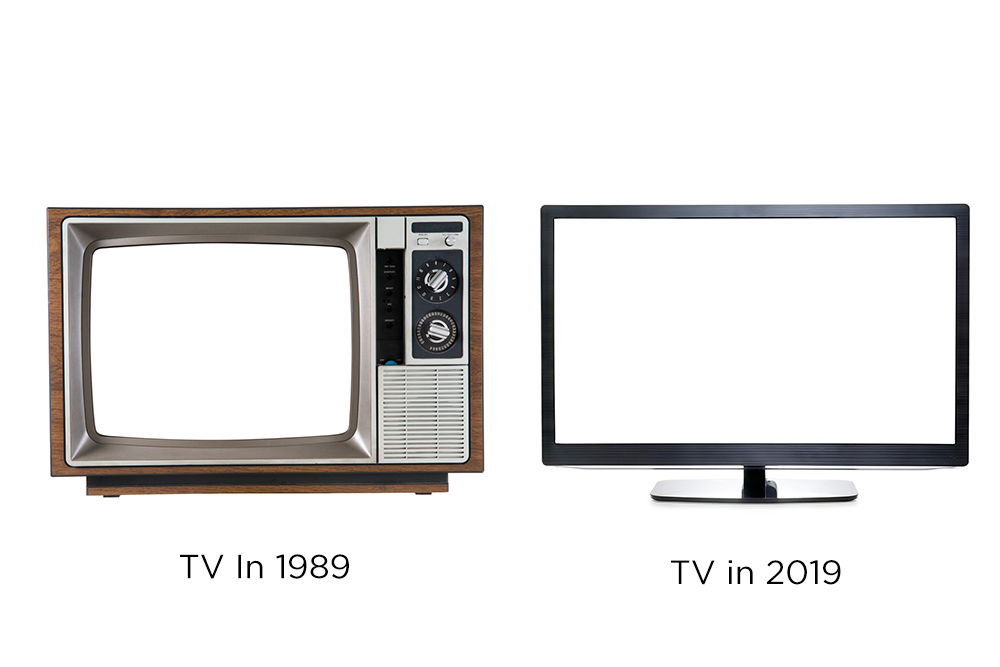Cleanroom News, Cleanroom Technology
Cleanroom Technology at CES 2019
Perhaps no event is quite so synonymous with the art and science of innovation than the Consumer Electronics Show held annually in Las Vegas, NV. With a social media reach of over 50 million views and mentions, and 4,500 exhibitors catering to around 183,000 live, in-person attendees, the show that kicks off the year is the largest of its kind. Showcasing new consumer-focused technologies for 50 years, the CES now inhabits a 2.9 million square feet space welcoming almost all comers (more on that later) from well-established companies to start-ups and everything in between. And, in the event that you didn’t get to check out the offerings this year, we’ve done the legwork so you don’t have to. And what surprised us most this year was the breadth of technologies, products, and ideas that drew our increasingly critical eye. Let’s take a look at what – with apologies to PT Barnum – may indeed be the greatest (consumer electronics) show on earth…
Some of the perhaps more ‘intriguing’ (read ‘bizarre,’ ‘off the wall,’ ‘out there’) ideas required a modicum of thought when considering their inclusion – or otherwise – in the show.
The first of these, the Elvie, is a cordless, free-roaming (one assumes) breast pump that allows women to pump breast milk discretely and ‘with minimal sound,’ safeguarding the sensibilities of those who still blush furiously at the mere idea that adult females lactate to nourish their newborns. Similarly, Nurture, a combination between a breast pump and a massager, debuted with a demonstration of two women pumping milk live and on-stage. You will be forgiven for wondering – as we did – which marketing genius thought that was a great idea…In the same vein, the Numi 2.0 Intelligent Toilet, by Kohler offers a ‘fully immersive experience’ that integrates Amazon’s assistant, Alexa to provide voice control to the ‘dynamic and interactive multicolored ambient and surround lighting.’(1) At between $7000 and $9000 per seat depending on color selection, this ‘innovation’ is most certainly for those for whom only the apex experience is truly acceptable.
And speaking of climactic experiences, this year also saw the selection and subsequent banning of the Osé, an intimate massager developed by a primarily female team that leverages biomimicry, robotics, and micro-engineering to produce a device that feels ‘just like a real partner.’(2)
Originally selected as an honoree, the Consumer Technology Association, the organization behind the show, later both rescinded the award and banned the creator, Lora Haddock, from exhibiting at CES at all. Haddock flatly refuted the CTA’s description of her device as ‘immoral, obscene, indecent, [and] profane,’ pointing out that devices catering to the male libido were clearly welcomed at the show including, but not limited to, a life-sized female sex doll. Furthermore, she noted, censorship of this type also blocks spin-off innovation: “You never know how technology will be used, the future of healthcare might well be in the patent for a sex toy. But if CES and CTA are so intent on keeping women and sex tech out, we’ll never find out.”(3)
Perhaps we’d better move along.
Let’s look at a form of entertainment we can all get behind. The TV has certainly come a long way since James Logie Baird famously demonstrated his groundbreaking televised silhouette images in Selfridges Department Store in London in 1925. From those now iconic images of a ventriloquist’s dummy (human faces had insufficient contrast to be broadcast successfully at that stage) to the black-and-white of the 1940s post-war era, from the introduction of color in the 1960s to the broad spectrum of digital TV, LED, plasma, and OLED, televisual technology continues to improve. And, if this year’s CES is anything to go by, we can now be as flexible with our hardware as we are, in this era of streaming and DVR, with our consumption: Please welcome the roll-up TV!
Yes, you did read that correctly: the roll-up TV.
As we discovered at the show, in the event that you have ever surfed the urge to turn your television set into a pretzel, LG – one of the three leading manufacturers of audio-visual equipment – now has you covered. Coing out of cleanroom technology and designed, one suspects, for those neatniks among us for whom a conventionally solid flat-screen TV just takes up too much space, LG’s rollable TV – with its 65-inch OLED display, Dolby Amos support, and Airplay 2 – is the lovechild of a television and a yoga mat. On the merest press of an Off switch, LG’s innovation powers itself down and retreats into its own box, mimicking a piece of sleek but ultimately aesthetically cold and unpleasing furniture. From the back, the impression calls weirdly to mind those slatted metal security shutters so beloved of grocery-money-transfer-six-pack stores in third world, cartel-ruled neighborhoods. Raised and lowered by a set of arms on either side, the screen looks completely solid when raised, showing no signs of wrinkles or creases. And the picture quality is superlative, offering what LG claims to be the best available with improved processing capability and HDMI 2.0 in the works.(5)
And all of this glorious cleanroom-enabled technology comes at a steep price.
Not only is it is the new Big Thing in televisual technology, OLED is also the new Big Expensive Thing on the market with prices running into the several thousands of dollars for a basic unit. So what is OLED and is it worth the additional expense? We’re glad you asked this question as, by the end of the show, it was our absolute favorite new acronym. OLED stands for Organic Light-Emitting Diode and, given the perhaps inevitable demise of plasma, That said, OLED is the outlier in terms of the technology it uses in an industry where pretty much every other TV is based on good ole-fashioned LCDs. OLEDs are far superior to these liquid crystal displays (sometimes termed LED, SUHD or even Quantum Dot LED or QLED) insofar as each pixel gets its own separate illumination instead of relying on a communal backlight of LED illumination, providing the best picture quality available. Moreover, OLED panels require no glass so are thinner than their counterparts meaning that they are both physically lighter and require less power to run, resulting in greater energy efficiency and a reduction in cost.
But, apart from the lack of glass, why are they thinner? This is where the technology becomes very interesting.
Any OLED screen – whether it is passive-matrix, active-matrix, transparent, top-emitting, foldable, or white – is crafted from multiple layers sandwiched together. Attached to a substrate, for example, is a transparent anode layer that creates electron ‘holes’ when a current is passing through the device. Above the substrate and the anode layers is the section of organic polymers before we come to a layer of conducting polymers. These compounds, such as polyaniline, transport the electron ‘holes’ from the anode layer through the emissive layer (manufactured, for instance, of polyfluorene) to the cathode. This final top section is where the light is generated as the cathode injects electrons when a current is present within the device. Light produced by an OLED device is emitted via electrophosphorescence as a specific color dependent upon which organic molecule is used in the manufacture of the emissive layer. First developed in the late 1980s, the molecules used in OLED devices have changed from the small organic molecules initially favored to large polymer molecules that can be made in broader sheets more suitable for large-scale displays. And, according to an article published by CNET, LG has now cornered the market in their production.(6)
The result is truly stunning and we very much look forward to seeing greater market penetration of these devices and resultant price drop.
But for the moment if you really can’t budget for a brand new, roll-up, flexible TV at this time or are just so over audio-visual technology – its cleanroom connection notwithstanding – there were other, perhaps more budget-friendly devices at CES that ran with the idea of ‘clean room’ technology. There was, for instance, the dental anarchy of the Y-Brush, a vibrating toothbrush developed by French company FasTeesH that positions the bristles at the optimal cleaning angle and allows the user to clean their mouth in just 10 seconds. Our minds were indeed boggled by the amount of time we’d be saving when using this device alone. But then there was also the Monit smart diaper sensor that detects when your precious new bundle of joy is temporarily no longer exuding that delightful ‘new baby’ smell. In the event of a dirty diaper, Mom or Dad will receive an automated alert…just in case the evidence of their own nose is too low-tech. And lastly, on a similar (malodorous) note, there was the almost inevitable example of outrageous pet pampering: the LavvieBot Litter Box. Looking somewhat like a cross between a laser printer and a tumble dryer, the LavvieBox boasts that is it so much more than just a self-cleaning litter box. Like the Monit smart sensor, it will not only monitor your (in this case, furry) baby’s ‘output’ but also send you a text when Fluffie manages to ‘do his business.’
A text when your furbaby poops. Let’s just let that sink in for a moment. Who, oh, who would have thought that this could indeed be the very apex of what our cleanroom technology would enable???
Did you visit CES this year? If so, what were your favorite innovations? Did anything stand out to you as a major leap forward? We’d love to know your thoughts!
References:
- https://www.theguardian.com/technology/2019/jan/11/ces-2019-consumer-electronics-show-10-most-memorable-new-gadgets
- ibid
- https://www.theguardian.com/technology/2019/jan/08/ces-dildo-gender-sex-toy-ose-personal-massager
- https://www.cnn.com/2019/01/07/tech/ces-2019-trends/index.html
- https://www.cnet.com/news/lgs-rollable-oled-tv-is-incredible-and-its-actually-going-on-sale-in-2019-ces/
- https://www.cnet.com/how-to/led-lcd-vs-oled/





















HAVE AN IDEA FOR CONTENT?
We are always looking for ideas and topics to write about.
Contact Us